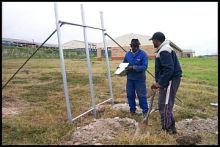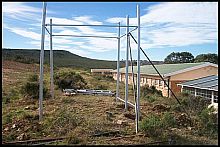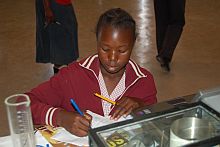SAEON supports educators in honing vital scientific skills
|
Since the beginning of this year SAEON’s Elwandle Node has hosted two educator workshops aimed at exploring climate and weather phenomena, and looking at the possibility of integrating these learning activities into the school curriculum across all learning areas.
One of the main objectives of the workshops has been to sketch a framework for the development of educational resources for a project focusing on weather and climate.
Educators will be able to use these educational resources to support school science activities related to weather and climate. The methodology embedded in the resources has been designed to support the Revised National Curriculum Statement and is also aimed at improving learning and teaching conditions.
The concept has not only been well received by the educators involved, but the initiative is also supported by the Department of Education in the Grahamstown district. The project involves five high schools in Grahamstown - Nombulelo Senior Secondary, Ntsika Senior, TEM Mrhwetyana Public School, Mary Waters High School and Nyaluza High School.
As a first phase, weather stations have been constructed at all of these schools. The stations are up and running and the accuracy of the sensors has been tested. The sampling procedure still needs to be revised to suit the school period protocols.
The stations are manufactured by LaCross Technology in the US and are commercially supplied in South Africa by Commercial Marine. These instruments are certified to be calibrated for one full year, after which they need to be recalibrated and their batteries changed so that the readings recorded stay accurate.
Learner benefits
Weather changes from day to day, and varies on local, regional, and global spatial scales. Learners will now be able to track data for their school on a continuous basis, and record daily variations in wind speed and direction, air pressure and humidity. They will learn to interpret, analyse and generate information from quantitative measurements, which can be easily integrated across all learning areas in a school syllabus.
In short, learners will be nurtured to acquire those vital scientific enquiry abilities listed as a priority in SAEON’s education outreach strategy.













